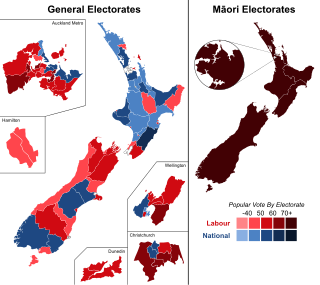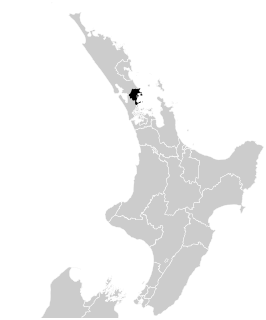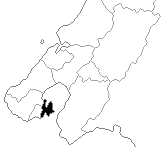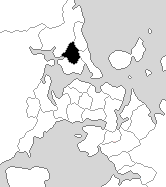Related Research Articles

The 1978 New Zealand general election was a nationwide vote to elect the 39th New Zealand Parliament. It saw the governing National Party, led by Robert Muldoon, retain office, but the opposition Labour Party won the largest share of the vote. Reorganisation of the enrolment system caused major problems with the electoral rolls, which left a legacy of unreliable information about voting levels in this election.

The 1972 New Zealand general election was held on 25 November to elect MPs to the 37th session of the New Zealand Parliament. The Labour Party, led by Norman Kirk, defeated the governing National Party.

The 1969 New Zealand general election was a nationwide vote to determine the shape of Parliament's 36th term. It saw the Second National Government headed by Prime Minister Keith Holyoake of the National Party win a fourth consecutive term.
Karori was a New Zealand electorate, situated in the west of Wellington. It existed from 1946 to 1978, and was represented by three different Members of Parliament during that period, all of them are represented by National Party due to being a wealthy suburb.

Helensville was a New Zealand parliamentary electorate in the Auckland region, returning one Member of Parliament to the House of Representatives. The electorate was first established for the 1978 election, was abolished in 1984, and then reinstate for the 2002 election. The seat was won and held by John Key through his term as prime minister. Chris Penk of the National Party held the seat from the 2017 general election until its abolition in 2020, when it was replaced with the new Kaipara ki Mahurangi electorate.

Rodney was a New Zealand parliamentary electorate, returning one Member of Parliament to the House of Representatives. The last MP for Rodney was Mark Mitchell of the National Party. He held this position from 2011 until the electorate was replaced with Whangaparāoa in 2020. Mitchell stood for and won that seat.

Whangārei is a New Zealand parliamentary electorate that was first created for the 1972 election. The electorate is usually a reasonably safe National seat, and was held for long periods by John Banks (1981–1999) and Phil Heatley (1999–2014), before being won in the 2014 election by Shane Reti. In the 2020 election election Reti narrowly lost the seat to Labour's Emily Henderson.

Miramar was a New Zealand parliamentary electorate in the south-eastern suburbs of Wellington. It was created in 1946, replacing Wellington East, and was replaced by Rongotai for the first MMP election of 1996.

Glenfield was a New Zealand parliamentary electorate for four terms, from 1984 to 1996. It was represented by two members of parliament, first Judy Keall of the Labour Party, and then Peter Hilt of the National Party. Hilt defected to United New Zealand in 1995.

Birkenhead was a New Zealand Parliamentary electorate on Auckland's North Shore from 1969 to 1996, when it was absorbed into the Northcote electorate.
Papanui is a former New Zealand parliamentary electorate. The electorate was in the northern suburbs of the city of Christchurch, and existed from 1969 to 1984.
Fendalton is a former New Zealand parliamentary electorate. It existed during two periods between 1946 and 1996. The electorate was in the western suburbs of Christchurch, New Zealand. Fendalton is an expensive suburb, and was always represented by the National Party.
Tasman is a former New Zealand parliamentary electorate, from 1972 to 1996.
West Coast is a former New Zealand Parliamentary electorate, from 1972 to 1996.
Tongariro is a former New Zealand parliamentary electorate, from 1984 to 1996. During the four parliamentary terms of its existence, it was represented by three members of parliament.
Ruahine is a former New Zealand parliamentary electorate, from 1972 to 1978.
West Auckland is a former New Zealand parliamentary electorate on the western outskirts of Auckland, created for the 1984 election from part of the former Helensville electorate. The electorate was abolished for the 1993 election, and split between Henderson and Waitakere electorates.
South Canterbury is a former parliamentary electorate, in South Canterbury, New Zealand. It existed for three parliamentary terms from 1969 to 1978.
Mornington is a former parliamentary electorate from 1946 to 1963, centred on the suburb of Mornington in the city of Dunedin, New Zealand.
Ponsonby was a parliamentary electorate in Auckland, New Zealand from 1887 to 1890 and from 1946 to 1963. The Ponsonby electorate was represented by two Members of Parliament.
References
- McRobie, Alan (1989). Electoral Atlas of New Zealand. Wellington: GP Books. ISBN 0-477-01384-8.
- Norton, Clifford (1988). New Zealand Parliamentary Election Results 1946-1987: Occasional Publications No 1, Department of Political Science. Wellington: Victoria University of Wellington. ISBN 0-475-11200-8.
- Wilson, James Oakley (1985) [First published in 1913]. New Zealand Parliamentary Record, 1840–1984 (4th ed.). Wellington: V.R. Ward, Govt. Printer. OCLC 154283103.